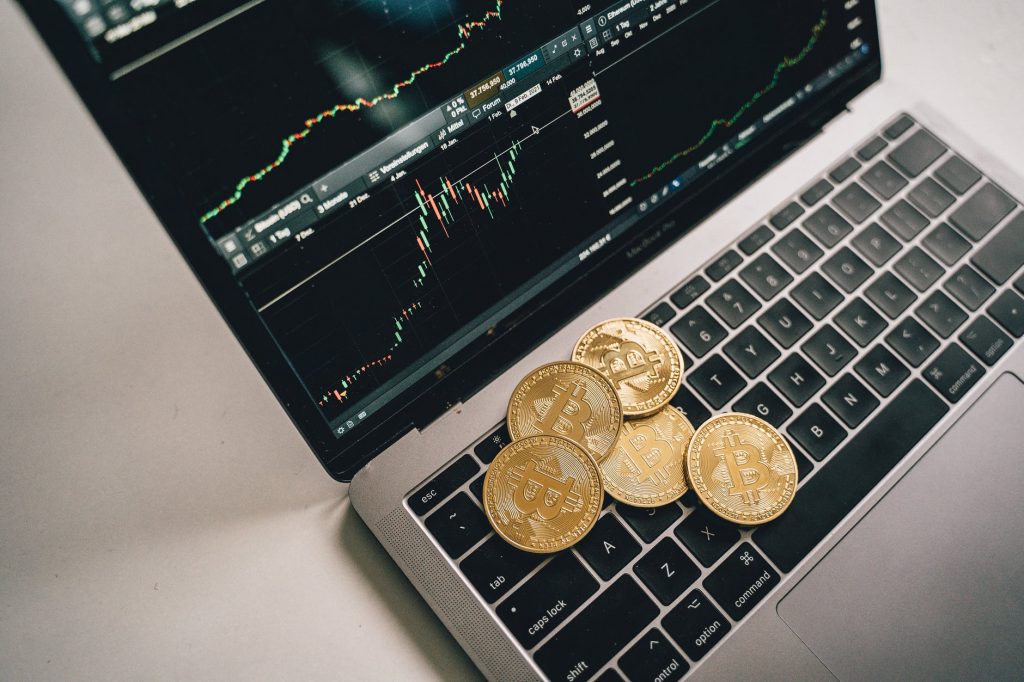Automated Market Makers
Automated Market Makers (AMMs) facilitate the trading of cryptocurrencies through liquidity pools. Liquidity Providers (LPs) contribute coins to a central pot, enabling 24/7 trading and reducing slippage. AMMs are designed to alleviate the challenges associated with connecting buyers and sellers through a traditional order book model.
This guide will explain how automated market maker algorithms work with key definitions, benefits and drawbacks, plus the best crypto platforms in 2025.
What Is An Automated Market Maker?
Automated market makers are popular in the DeFi industry where investors buy and sell cryptocurrencies. Anyone with an internet connection can exchange tokens like Bitcoin on a peer-to-peer network, however, low liquidity can make it difficult to execute trades quickly and at the best price.
This is because exchanges typically operate using an order book model, whereby an interested buyer is connected with a willing seller. But if there isn’t a suitable party to take the other side of the trade, slippage occurs – delaying executions while widening spreads and increasing opportunity costs. The result is that ultimately it becomes harder to buy and sell assets. This proved particularly challenging in the early stages of the Ethereum project.
Fortunately, Vitalik Buterin came up with a dynamic solution – automated market makers. AMMs are essentially algorithms designed to tackle the liquidity obstacle. Liquidity Providers contribute coins to a central pool, in exchange for fees, ensuring there are enough coins available to interested traders. This means investors can trade popular cryptos 24/7 with competitive trading conditions.

How Does An Automated Market Maker Work?
Liquidity essentially measures the availability of a particular asset, such as Bitcoin or Cardano. Automated market makers use mathematical formulas to measure liquidity levels and to incentivise token holders to contribute coins to a central pot. In return, providers are rewarded in commission each time a trade takes place in their pool. Importantly, AMMs operate through smart contracts, verifying and legitimizing transactions.
Formula Explained
Let’s say an investor wants to exchange assets A and B, but liquidity is low. First, software bots check which two assets the investor wants to trade. Then they will use the following formula:
- X*Y= K
- X – the number of tokens from asset A in the liquidity pool
- Y – the number of tokens from asset B in the liquidity pool
- K – fixed constant in the equation
Because K is a constant in the formula, the prices of the two assets will change based on the amounts being bought and sold. So if you wish to purchase A for B, the algorithm will analyse the constant value between A and B to establish a price. The trader can then choose whether to accept or reject the offer, paying a small fee upon execution.
Note, AMM platforms may use slightly different formulas, but the basic is the same.
Example
Let’s bring the example to life: if you buy Bitcoin with Ethereum, you take BTC out of the liquidity pool and give ETH back as payment. The pool now has less Bitcoin and more Ethereum. This causes a change in the ratio between the two assets, which translates to a change in price.
Once the system has defined a suitable price, it will create a smart contract. This engraves the data necessary for the transaction directly into the code. The information contains the specific cryptocurrency, the number of coins exchanged and the established price. Once the bot has set up a smart contract, the AMM will present it to the investor. The trader can then either accept or decline the transaction. If they accept the offer, the exchange will ensue.
Importantly, a second party is not necessary – they are replaced by software. As a result, the investor can exchange tokens without needing to find a specific counter-party.
It’s also worth pointing out that some slippage can still occur as the exchange price is calculated using the current ratio of available tokens, so when an LP contributes coins to the pool, the value of the asset may fall. This is known as impairment.

Advantages
Benefits of automated market models include:
- Middlemen – AMMs replace counter-parties with smart contracts. Cutting down on an intermediary also means lower fees.
- Availability – Traders don’t need a second party to exchange tokens with, meaning sufficient liquidity 24/7. Virtual or simulator accounts are also available for traders looking to demo brokers before trading with real money.
- Slippage – Low liquidity often goes hand-in-hand with high volatility. This can led to wild price action and sharp fluctuations in the value of assets. As a result, price slippage can occur between the time your software signalled an entry or exit point and the time you actually execute the position. Automated market makers help reduce this risk by bolstering liquidity levels, and in turn, limiting slippage.
Disadvantages
Automated market maker systems also have some drawbacks:
- Hacks – AMM brokers and exchanges have been subject to hacking attempts in recent years. This has lead to some investors losing a substantial amount of cryptos. As a result, we recommend signing up with an established provider from our list like Uniswap, PancakeSwap, Curve, Binance or Kyber Network.
- Impermanent loss – AMMs base the value of assets on the respective ratio in the liquidity pool. Occasionally, the ratio between assets inside and outside a liquidity pool differs. In this case, bots may charge a price that is not representative of the wider market. Fortunately, some savvy investors see this as an opportunity for arbitrage trading – buying and selling the same tokens across platforms to benefit from price disparities.
Verdict
Automated market makers are becoming increasingly popular in the DeFi space. They bypass the traditional order book model and remove the need for a counter-party, thereby increasing liquidity and lowering fees. They essentially offer a low-cost way to trade cryptocurrencies 24/7. But despite the positives, it is worth pointing out that exchanges have fallen victim to hackers and there is still some risk of impairment loss.
Note, papers on specific systems like the Balancer AMM protocol can be found online.
FAQ
Are Automated Market Makers Also Used In Traditional Financial Systems?
To date, automatic market makers primarily offer solutions in the decentralized finance (DeFi) environment. This is, in part, because traditional centralized finance (CeFi) systems often have higher liquidity levels, reducing the need for AMM software.
Do Automated Market Makers Protect Against Price Slippage?
AMMs help combat low liquidity, thereby protecting against price slippage. But while slippage is reduced, it is not eliminated – there is still some risk of impairment loss. See our guide for details.
How Big A Risk Is Impairment Loss?
While impairment loss can affect trading conditions, some platforms are looking to combat the issue. Uniswap, for example, adds stablecoins to its liquidity pool to try and keep prices in and outside of the pool level. So although there will probably always be some risk of impairment loss, slippage levels are generally lower than traditional order book models. For the best brokers and exchange options, see our list above.
Are Automated Market Makers Safe?
Automated market makers are relatively secure in some situations. For example, they can help reduce fraud because you are dealing with software and code instead of individual traders. With that said, AMMs are computer programs so they are susceptible to hackers. In fact, there have been cases where millions of dollars worth of tokens have been stolen.
